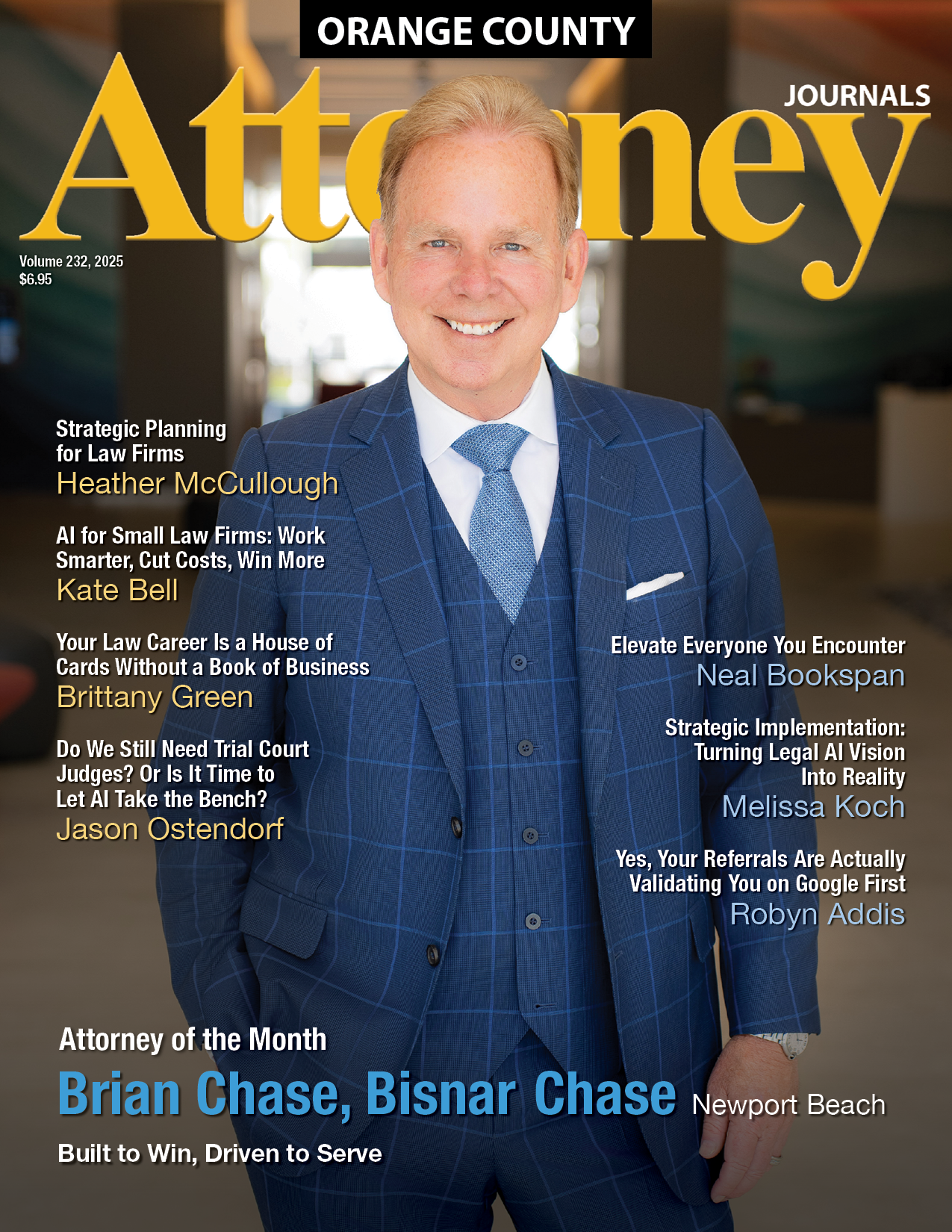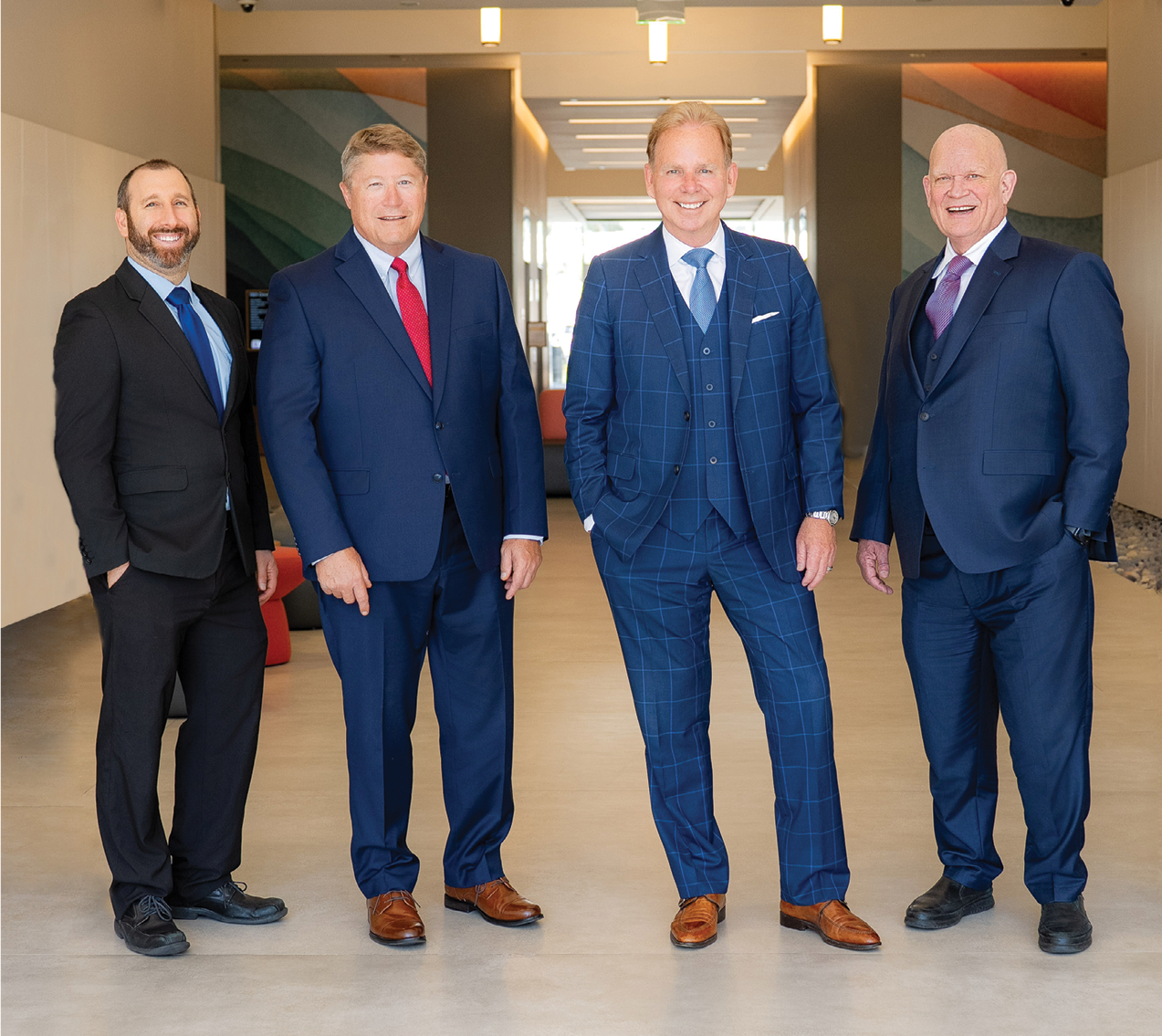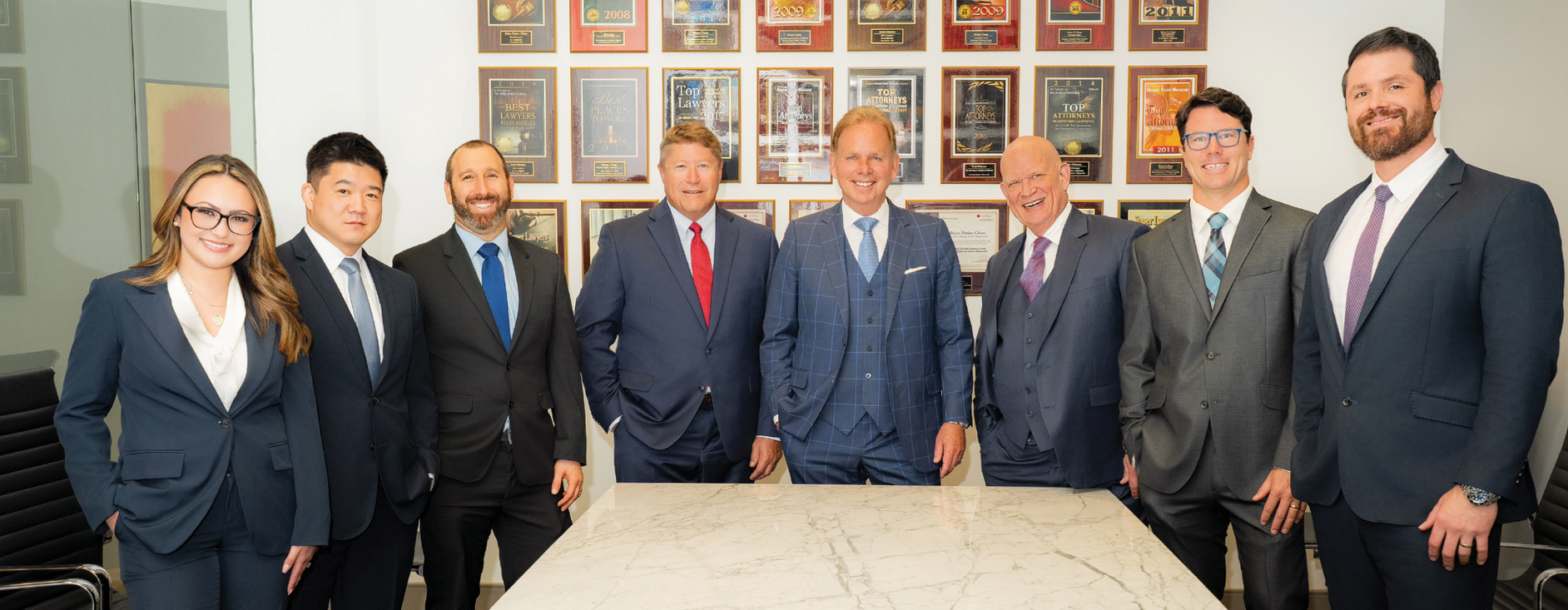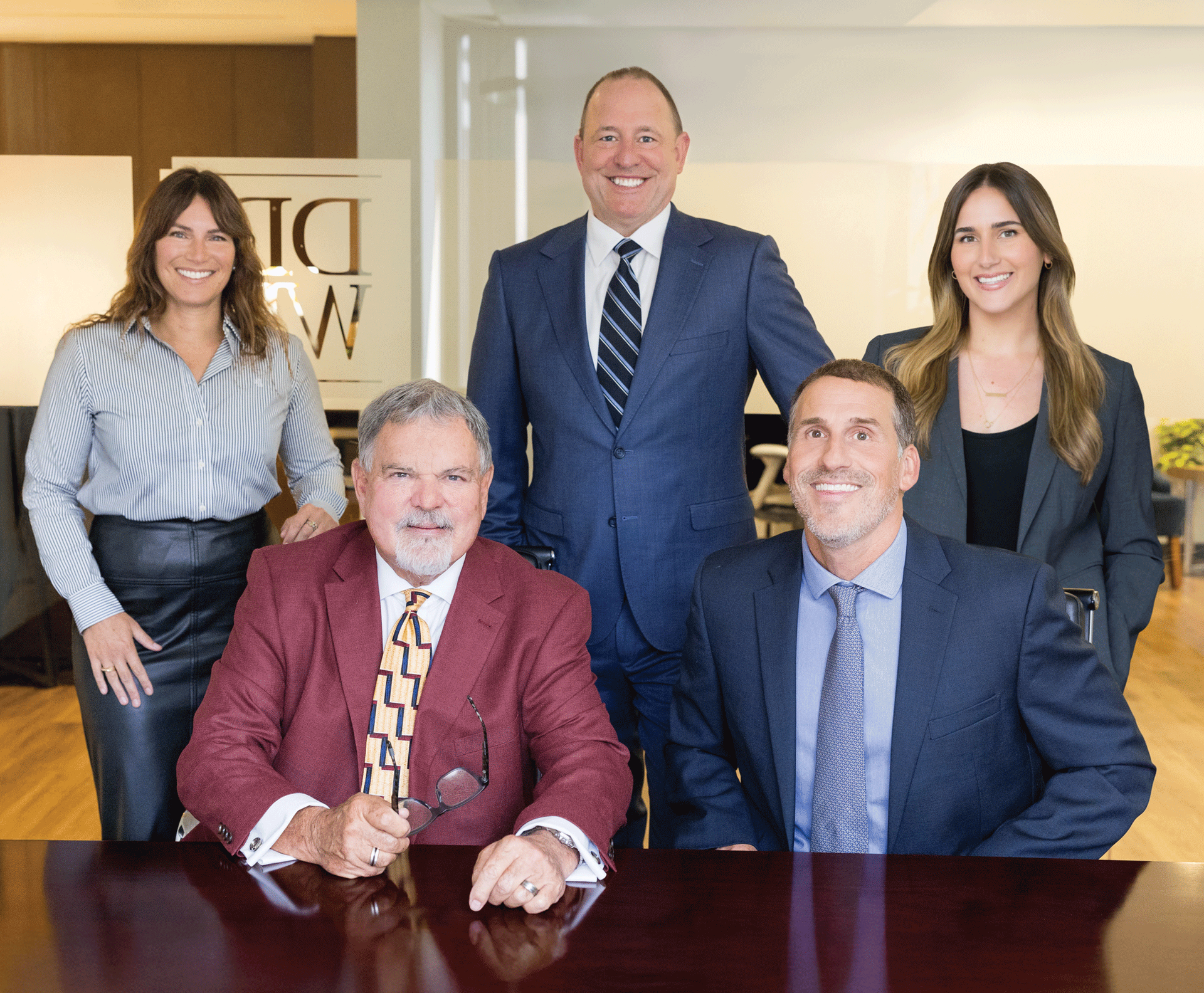Built to Win, Driven to Serve
Contact
Bisnar Chase Personal Injury Attorneys, LLP
1301 Dove Street, Suite 120
Newport Beach, CA 92660
Balancing Heartfelt Client Advocacy with Trailblazing Insights on Technology-Driven Defects in Today’s Legal Landscape
Brian Chase and the attorneys and staff at Bisnar Chase Personal Injury Attorneys, LLP stand out for two key reasons: their unwavering commitment to serving the common good and their leadership at the forefront of law and legal technology in a rapidly evolving industry.
The approach of the eight-attorney, 40-person firm with five offices has worked well for the firm and especially for their clients. Numbers don’t lie. A sampling of recent successes illustrates that point: $117,500,000 consumer class action; $38,650,000 motor vehicle accident; $32,698,073 auto product liability; $30,000,000 motorcycle accident; $24,744,764 defective seatback failure; $16,444,904 catastrophic pedestrian accident; $14,443,205 auto product liability; $12,248,000 auto product liability; 11,000,000 motor vehicle accident; $11,000,000 negligence facility death; $10,500,000 products liability; and $10,200,000 auto product liability. The firm has a 99 percent success rate, winning more than $1 million in verdicts and settlements.
Bisnar Chase was named Law Firm of the Year by the American Institute of Legal Professionals for the eighth consecutive year. Three of the firm’s attorneys were named in the Top Ten personal injury lawyers in the U.S. For the 11th consecutive year, Bisnar Chase was named one of the Best Places to Work in Orange County and the 2023-2025 Best Places to Work in Southern California from the LA Times.
In addition to the main office in Newport Beach, the firm provides services in Los Angeles, San Bernadino, Riverside, and San Diego. Practice areas include auto defects, catastrophic personal injury, trucking accidents, car accidents, motorcycle accidents, consumer and employment class action.
“I’m so impressed with this law firm. I lost my mother because of a seat defect when she was rear-ended in an auto accident and Bisnar Chase stepped up and took our case. The staff is wonderful and Brian Chase took his time explaining everything with me. I’m honored to have the best of the best working on our family’s behalf, trying to get justice for my mom, because of a negligent car company still manufacturing faulty seats. I look forward to working with this firm and am hopeful for a positive outcome. Thank you so much, Brian Chase. I know you will work your hardest on this case. God Bless you.” —Natalie C.
Ian Silvers (Partner, Trial Lawyer), Scott Ritsema (Partner, Trial Lawyer), Brian Chase (Managing Partner, Senior Trial Lawyer) and Steven Hilst (Partner, Trial Lawyer).
Uncommon Service for the Common Good
Managing Partner and Senior Trial Lawyer Brian Chase expresses the firm’s philosophy when he says, “It may sound trite these days, but I went to law school specifically because I wanted my life’s work to really mean something. I wanted to do work that matters for the common good of my brothers and sisters out there. I specifically went to law school to become a personal injury attorney and because I wanted to do auto products liability where I could achieve that goal.”
Chase cites a 2012 case in which the firm earned a $25 million verdict in Romine vs. Johnson Controls, which clarified the law on how product defects cases are proven in the State of California, especially with regard to automobile seatbacks. The auto industry petitioned the Supreme Court of California to depublish the opinion which failed. The published appellate opinion was delivered in 2014. He says that because of their client’s courage in taking her case to trial against seemingly overwhelming odds, she is indirectly helping thousands of people in California who have been injured by defective products who now have an easier time in court to prove their case. Chase, nicknamed “the seatback guy,” says, “I am happy now, 11 years later, that it’s still the law of the land and is still helping consumers in all kinds of product liability cases, even non-auto defect cases. Helping the ‘little guy’ win a big case against big odds proves to me that I made the right career choice.”
Bisnar Chase has been involved in a number of other highly-significant cases. Martinez vs. Ford Motor Company, an auto products case concerning forum non conveniens, which established certain circumstances in which FNC grant is inappropriate; Scheiber vs. Estate of Kiser which dealt with expert witness designations and the scope of percipient expert witness testimony; and Hernandez vs. State of California which dealt with governmental design and immunity and establishing two of three elements are statements of fact for the jury, not the court, to decide.
They often represent individual people and families who are struggling with some of the biggest challenges of their lives. Chase mentions a case of someone who must be carried up and down to or from a second-floor apartment—someone who is paralyzed and physically unable to climb stairs. The case involves a back seat incident. Because of the firm’s representation she will acquire a single-floor house. The doors in the client’s house will be widened so she can move around freely. Ramps will be placed at the doors so she can enter and exit easily.
Chase says the cases they handle benefit their clients, but also indirectly they help the people who are or who will become clients of other attorneys and other firms. Even though Bisnar Chase is often in the “David vs. Goliath” position, every time they get a verdict or a settlement on their cases, the decisions automatically affect corporate behavior, Chase says. “Obviously I can’t take down Ford Motor Company or General Motors or Elon Musk by myself. But the hundreds or thousands of lawyers across the country that do what I do, and what my predecessors did, all of us together are all making cars and other products safer for everyone—for the common good. When a parent drives his or her kids to a soccer game, to school, to the doctor’s office or wherever, they’re a heck of a lot safer because of people like us.”
Lindsay Graves (Associate, Trial Lawyer), Eric Chun (Associate, Trial Lawyer), Ian Silvers (Partner, Trial Lawyer), Scott Ritsema (Partner, Trial Lawyer), Brian Chase (Managing Partner, Senior Trial Lawyer), Steven Hilst (Partner, Trial Lawyer), Michael Teiman (Associate, Trial Lawyer) and Jake Cohen (Senior Associate, Trial Lawyer).
Leading the Cutting Edge
Chase says products may get better and that is certainly true of automobiles today. He also notes, however, that there are now brand-new defects that many lawyers do not recognize.
For example, roof-crush cases are on the decline because roofs are stronger than they were a decade ago. Cars have electronic stability control, so the number of rollover cases have also declined. Airbags have gotten better since the 1990s, so those and other types of cases have declined. Yet, seatbacks are as defective as they were 30 years ago when they were constructed to 50-year-old standards, Chase says. Seats are still failing, which causes paralyzing accidents and catastrophic injuries. People get broken necks or catastrophic brain damage or both. Children in back seats can be seriously harmed when a front seat fails and the driver or passenger is thrown backwards. There are still missed opportunities for savvy attorneys to better serve their clients these days.
Collision avoidance technology and automatic emergency braking technology have lessened the number of rear-end accidents. Instead of hitting a car at 40 or 50 or 60 mph, the car will either stop depending on how fast it’s going or instead of hitting it at 40 or 50 it may rear end it at 10 or 20 miles an hour, which will not to break the seat. “This is important technology for a whole host of reasons to minimize serious and catastrophic injuries and car crashes. Too many attorneys don’t realize the effects of these dramatic changes on the status of their cases and other potential defendants.”
Attorneys who do not handle product liability cases may not realize they have such a case on their hands. If a roof crushes on a car many lawyers are not going to miss that because if someone’s catastrophically injured and the roof is down to the doors they’re going to think ‘I wonder if that’s a defect’ and they’re going to talk to somebody like me about that. But this collision avoidance technology is just now getting “on the radar” because it’s not readily apparent to attorneys not trained to look for such things.
Chase says he makes presentations to attorneys and attorney groups all over the country and has often been approached by lawyers who were completely unaware of such matters. “Everybody seems to be missing these CAT and AEB cases. It’s time for attorneys to get up to speed on the learning curve in this area.”
And the reason I know they’re missing them is I give presentations all over the country and I’ve spoken on this subject during the last couple years. Several lawyers approach me saying they were completely unaware of this situation. “’What about this case I have in my office right now?’ or ‘What about this other case?’ they ask. I objectively know they’re missing those cases. It’s unfortunate because, one, the firm loses income, but, two and more importantly, the firm loses an opportunity to better serve a client in need.”
He cites an example of such a case that happened as recently as this spring. A driver in a car with a dash cam video was driving down a freeway at night. Ahead a young man on a motorcycle who was about 100 yards ahead signaled for a lane change. He was apparently having a malfunction with some part of his motorcycle. As the cyclist moved to the shoulder, the drive rear-ended him, which resulted in the cyclist’s death. If that car had collision avoidance technology or automatic emergency braking that car should have stopped and this would have never happened. Something was wrong, something attorneys who weren’t looking for it missed.
The cyclist’s family hired a lawyer to represent the kid on the motorcycle for wrongful death. That law firm collected an insurance policy and then closed the case. Had the attorneys done their due diligence, they would have realized they had a product liability case in hand because the car, a 2022 model, should have had anti-collision and automatic breaking technology installed. Either the equipment malfunctioned or perhaps the driver had disabled it. Either way, the original attorneys completely missed a case against the automobile manufacturer.
Chase says, “It happens all the time and so I’m really driven to get the word out on this. You know obviously selfishly of course I want to get the cases but more importantly I don’t want lawyers giving bad advice. They owe it to their clients that, aside from collecting a $15,000 policy, a $100,000 policy, or a million-dollar policy, they owe it to their client to say ‘I don’t do products liability but you may have a case here.’ The client deserves to know that and not go home and find out five years later that their lawyer missed a case.”
“Everything they said they would do, was done! The worst part of my experience with Bisnar Chase was when the case was finalized and I felt like I’d lose the friendship I established with the firm. I always appreciated the kindness I was shown by the staff when I was in the office. My overall feeling of Bisnar Chase was that I was represented by the best law firm in California.” —L. Jones
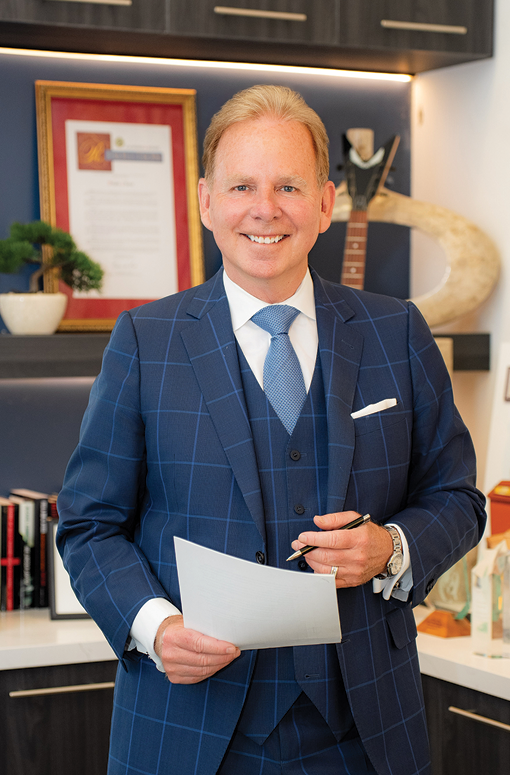
Keeping a Promise
Everyone at Bisnar Chase is aware of a promise John Bisnar made to himself when just beginning his legal career. It is a promise the entire team is committed to keeping. The promise emerged from an experience he had with one of his law school professors who was a famous personal injury attorney. Bisnar saw firsthand how the attorney/professor did a poor job of representing his clients. Because of that early experience he vowed that his clients would get the highest quality of professional service he could possibly provide. He and his people kept that promise when he formed Bisnar & Associates in 1978. The promise became a shared experience with a larger group of professionals in 1998 when he and Brian Chase formed Bisnar Chase. Since then, they have represented more than 14,000 clients, keeping that promise with each one.

